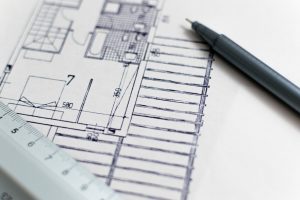 With technology’s rapid pace of change, it’s not always possible to stay in front of every major trend. We spoke with Michael Morris of to find out how to structure a design team that supports one another just like a tight knit family of Architectashians.
With technology’s rapid pace of change, it’s not always possible to stay in front of every major trend. We spoke with Michael Morris of to find out how to structure a design team that supports one another just like a tight knit family of Architectashians.
Rosenberg: What do you see as the biggest misunderstanding that clients have about design?
Morris: Architects are good listeners, who provide their clients with something they really appreciate and value deeply, but did not necessarily know how to articulate or ask for in the process. That is our main job.
It can be hard sometimes for clients to understand that while we provide them with professional services, it’s collaboration. Reasonable clients understand that what might seem like an indulgence to the architect will add character to a project.
We often suggest, say a high-end finish for a cabinet, because it will create a greater sense of space. Then we work very hard to find other ways to be more cost effective for them. The key is spending appropriately.
Rosenberg: What tends to be the hardest part of drawing up plans for someone’s home?
Morris: An architect really needs to be engaged and think of EVERYTHING.
Depending on experience, the kitchen is usually where we spend the most time. Selecting appliances can take forever. I like designing kitchens, but it can be hard to compete with manufactured kitchens. We are, now more than ever, competing with kitchen manufacturers and a custom kitchen made to a manufactured kitchen specs is going to be more expensive.
In the city today, even a small bathroom renovation starts at $10,000. With just the time it takes to get through the building regulations and the city requirements, etc., you’ve spent $10,000 and you haven’t even built anything. If you change the plumbing you often need to change the riser in the apartment above. And on and on. It’s just very complicated and getting more and more expensive just to do a simple renovation.
The legal/financial structures of the city are its own worst enemy. Today’s residential buildings have become overly complicated and costly management structures, with their own architects and engineers and lawyers. Time is money. Once you go through all the necessary city approvals and take on the responsibility and liability of the project, you should be able to move forward smoothly toward job completion. More often this is not the case with building managers requiring independent reviews that create delays.
We work to build a client’s respect and trust in part so they won’t have to be involved as much with the endless trivial things in the construction process. Part of our professional role is to save people (and ourselves) the stress and time.
Rosenberg: How are you seeing technology change in home design?
Morris: My biggest thing recently has been the transfer from halogen lighting to LED lighting. It seems like I just woke up one day and everything was LED. I can usually spec all the lighting on a small project, but new technology has changed so much that it has become more difficult. It’s a big curve ball and I had to call an old friend – a lighting designer for some professional help. Younger clients are more tech savvy and they want all the newest, coolest gadgets.
Rosenberg: What is typically overlooked in a home construction project?
Morris: Sometimes things come up and need to be addressed and we look for ways to make the design more seamless.
We had a Fifth Avenue project where we were combining 3 apartments. We had to take out all the walls. In doing so, we found all these odd beams going across the ceiling, and none were exactly the same. We eventually decided to add coves so it felt like the ceiling was continuous. It ended up looking like one of those barrel-vaulted loft spaces. What could have ended up being an unwanted compromise became an elegant feature.
Rosenberg: How do you ease the stress of the inevitable?
Morris: It really helps to be on social terms with clients during construction of the project. For example, I like to help my clients with furnishings and artwork, and I don’t take a commission on that work. I like to see a project all the way through, but it also helps take the client’s mind off the anxiety of the construction process and allows them to start focusing on the things which are really going to make it their home. Going window-shopping with your clients and having lunch; these things are stress breakers.
Also, I usually help my clients select a contractor, which cuts down on conflicts if we have had a prior working relationship.
Rosenberg: What challenges do you have with interior technologies such as motorized window treatments?
Morris: Technology can make things mysterious. Sometimes I don’t know the best option to give somebody. Having quality people around me really helps me to better serve my clients.
I once had a difficulty with a blind supplier, and it’s happened with lighting suppliers as well. What happened was that the people I worked with to design the blinds (or lighting) were not the people who did the installation. And clearly there was a miscommunication somewhere and it was done incorrectly.
A project needs to be completely integrated. We can’t each be in a corner doing our jobs independently. We must all have one vision and work together to achieve it.
Looking for a true partner who will integrate with your design team? Email info@roseintech.com.
